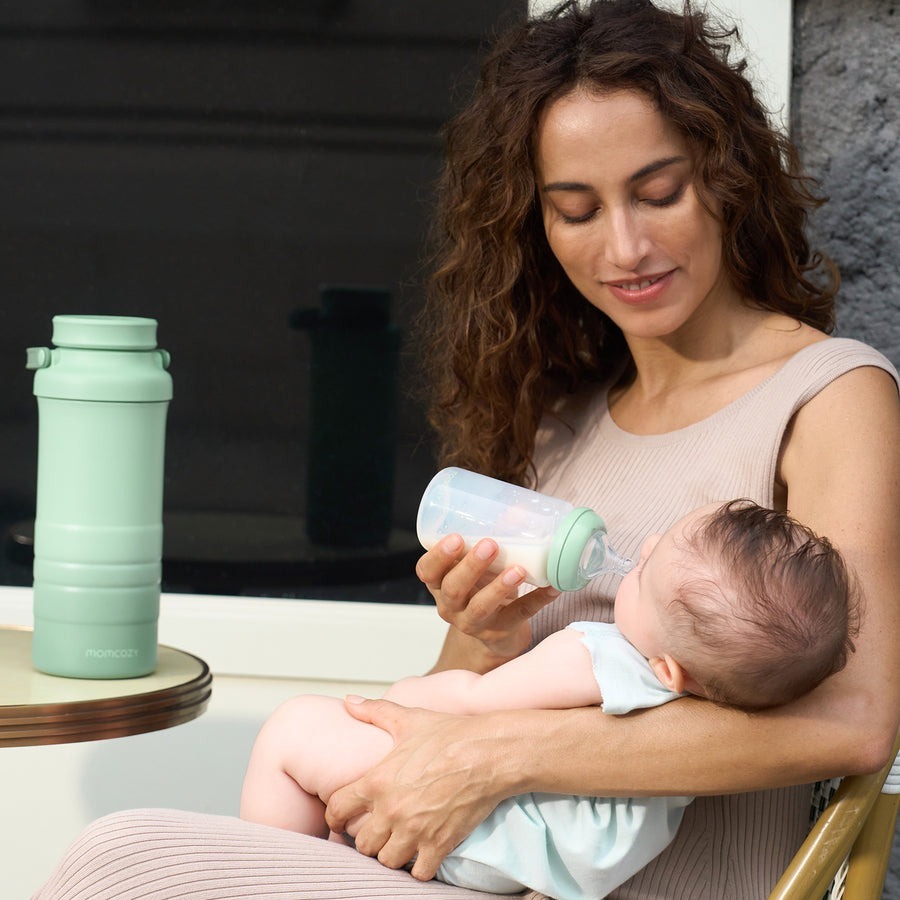
Time-Saving Pumping Tips Every Breastfeeding Mom Should Know
Time-saving pumping.
Let’s be real: pumping breast milk can take up a surprising chunk of your day. Especially if you’re doing it multiple times and juggling, well… everything else. But it doesn’t have to feel like a constant time suck. With the right breast milk pump, you’re getting in, getting out, and walking away with a bottle full of liquid gold.
A little prep here, the right gear there, and suddenly you’re not dreading your next session—you’re getting in, getting out, and moving on with your day (with a bottle full of liquid gold in hand). I’ve learned that by fine-tuning the way you pump—how often, how long, with what tools—you can carve out more time for, you know, life.
Optimize Pump Settings & Equipment

Half the battle with pumping is just getting the setup right. Trust me—once you figure out your gear and settings, the whole process becomes way less frustrating.
Use Double Pumping

Double pumping changed everything for me. The first time I realized I could cut my pumping time in half just by using a double breast milk pump? Magic. It feels like cloning yourself for 20 minutes. Most good pumps offer this feature—and if you’re multitasking or squeezing in a session between meetings or naps, it’s a lifesaver.
Set Comfortable Vacuum Level
Here’s a secret: more suction doesn't mean more milk. (I learned that one the hard way.) The best vacuum level is the one that’s just strong enough without making you wince. I usually start on a low setting, ramp up once let-down starts, and then dial it back. It’s all about finding that sweet spot where you're comfortable and still getting a good flow.
Warm-Up & Let-Down Techniques
If you’re feeling a little sluggish in the let-down department, warming up your breasts beforehand really helps. I’ll use a warm compress or just massage gently for a minute or two before I start. Once I’m pumping, I’ll keep massaging here and there—just enough to nudge things along. It might add a minute up front, but it seriously cuts down the session overall.
Structure Your Pumping Sessions

Once you’ve got your technique down, consistency is where the real magic happens.
Maintain Regular Frequency
Milk production loves a routine. I try to stick to pumping every 2–3 hours during the day (especially in those early weeks when supply is still regulating). Sometimes I set alarms. Other times I just go by feel. Either way, having a rhythm helps my body know what’s expected—and makes each session more productive.
Optimal Duration
Not every pump needs to be a marathon. Most of the time, 15 to 20 minutes does the trick. If I’m flowing well, I might wrap up sooner; if not, I’ll stretch it out. It’s about reading your body and not forcing things. But don’t rush it—oxytocin (the hormone that helps with let-down) needs a little time to kick in.
Power Pumping (Cluster Style)
Every once in a while—especially if I feel my supply dipping—I’ll do a “power pumping” session. It’s basically a fake-out for your body: 20 minutes on, 10 minutes off, repeat for about an hour. It mimics a baby’s cluster feeding, and it’s worked wonders when I needed a boost.
Maximize Milk Flow in Each Session

Let’s make those minutes count. If I’m going to be tied to a breast milk pump, I want every drop to matter.
Use Breast Compression & Massage
Massaging and compressing during pumping isn’t just a nice extra—it’s a legit way to speed things up and increase output. I usually do a gentle breast massage before starting and use light compressions as I go. It helps empty the breast more fully and shortens the overall session. Total win-win.
Ensure Proper Flange Fit & Positioning
If you’re using the wrong flange size, everything feels off. It’s uncomfortable, your output drops, and your session drags on. It took me a while to realize this, but once I switched to the right size, pumping got faster and way less painful. Also, always center your nipple in the flange before starting. Little detail—big difference.
Position and Posture
Posture is one of those things that sneaks up on you. If you’re hunched over, not only are you uncomfortable, but let-down might stall. I always make sure I’m sitting upright with good back support and something under my arms. It doesn’t have to be fancy—pillows work just fine. The more relaxed I am, the smoother it goes.
Prepare & Streamline Environment

You don’t need a Pinterest-worthy pump station. But having things ready and in reach? Huge time-saver.
Pre-Pack Pump Supplies
I keep a little basket or tote bag packed with everything I need: pump parts, bottles, wipes, snacks, water—sometimes even a spare shirt (you never know). That way, when it’s time to pump, I’m not wasting 10 minutes hunting things down.
Practice Hygiene & Sterilization
Yes, it’s a chore—but a necessary one. I clean and sterilize my pump parts daily, and if I’m really short on time, I use sterilizer bags in the microwave. The more I stay on top of it, the easier it is to maintain the flow of things (pun very much intended).
Equipment & Lifestyle Considerations

Let’s talk about the things that make pumping actually doable in a busy life.
Choose High-Quality or Double Electric Pump
Not all pumps are created equal. A high-quality double electric breast milk pump can make the difference between a 30-minute struggle session and a quick, effective one. Look for adjustable settings, good suction, and durability. Bonus points if it’s easy to clean and portable.
Incorporate Wearable or Hands-Free Options
Once I tried a hands-free pump, I wondered why I hadn’t done it sooner. Being able to fold laundry, respond to emails, or eat lunch while pumping is a game-changer. I’ve been using the Momcozy Mobile Flow™ Hands-Free Breast Pump | M9, and honestly? It’s one of the most freeing things I’ve added to my routine. It slips into my bra, runs quietly, and lets me pump wherever I am—no tubes, no stress.
Stay Hydrated & Nourished
If I’m dehydrated or hungry, my supply definitely feels it. I try to keep a water bottle next to me and have something snacky nearby—like trail mix or a granola bar. Small habits, big payoff.
Common Mistakes That Slow You Down

We’ve all done it. Here are a few missteps that can sneak up and steal your time:
- Not cleaning pump parts regularly – It affects suction (and makes you dread setup).
- Wrong flange size – Slows everything down and causes discomfort.
- Forgetting to massage or compress – You’re missing out on faster flow.
- Skipping sessions – Throws your body off and can tank supply.
- Disorganized space – Makes pumping feel like a scavenger hunt.
- Awkward posture – Adds tension and delays let-down.
- Cutting sessions short – Can lead to incomplete drainage = more pumping later.
- Not staying hydrated – Really does impact how much you pump.
Sample Efficient Routine

Here’s a simple routine that’s helped me stay on track without overthinking it:
- Gather Everything – Pump, bottles, parts, snacks, water.
- Stick to a Schedule – Every 2–3 hours, tracked with an app or notes.
- Adjust Pump Settings – Start low, increase gradually to find comfort.
- Warm Up – Massage or warm compress to kickstart let-down.
- Pump 15–20 Minutes – Use compressions, stay relaxed.
- Power Pump (If Needed) – Great for boosting supply during dips.
- Clean Up Right After – Less stress later.
- Drink Water & Refuel – It really helps!
Conclusion
Pumping doesn’t have to take over your life. Once you’ve got the right setup, tools, and rhythm, it becomes part of your day—not the whole day. Whether you’re using a high-tech double electric breast milk pump or a hands-free wearable like the Momcozy M9, the goal is the same: to make things easier, not harder.
Give yourself grace while you figure out what works best. There’s no perfect way to pump—only the way that fits into your life. And with a few of these strategies, you’ll not only save time—you’ll save your energy for the things (and tiny humans) that matter most.











